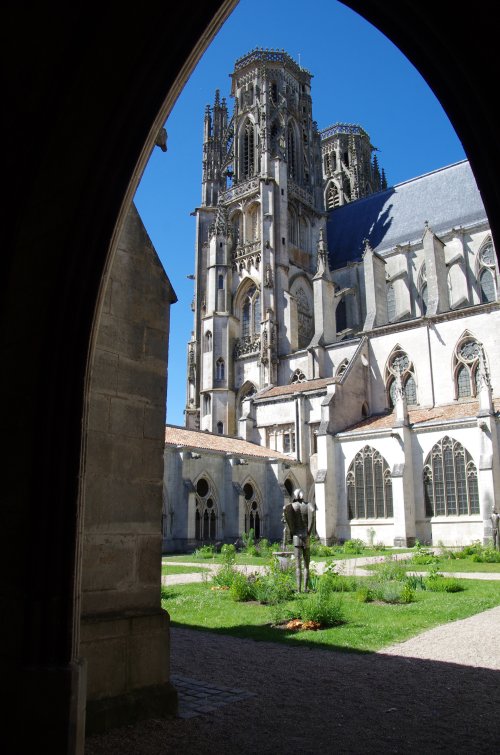
Measuring 54 metres by 42 metres the cloister of Saint Etienne’s cathedral is one of the largest gothic cloisters in France.
Dating from the 13th and 14th centuries onward the cloister opens onto the garden through three large bay windows formed by two lancets and three open oculus.
The garden symbolises the earthly paradise where three worlds meet i.e. the (1) plant world shown by the carved elements on the capitals and the consoles of the frieze bordering the roof and the (2) animal and (3) human worlds shown by the gargoyles and modillions.
In the Garden of Eden there was a river flowing which was ‘the water of life’ and it is marked here by the well in the centre of the garden from which four alleys leave which symbolise the four secondary arms of the river : the Tigris the Euphrates the Pishon and the Gihon.
This garden is thought of as a place of meeting and expression where calm and serenity predominate.
In summer artists exhibit their work in the midst of a colourful bloom of flowering perennials.
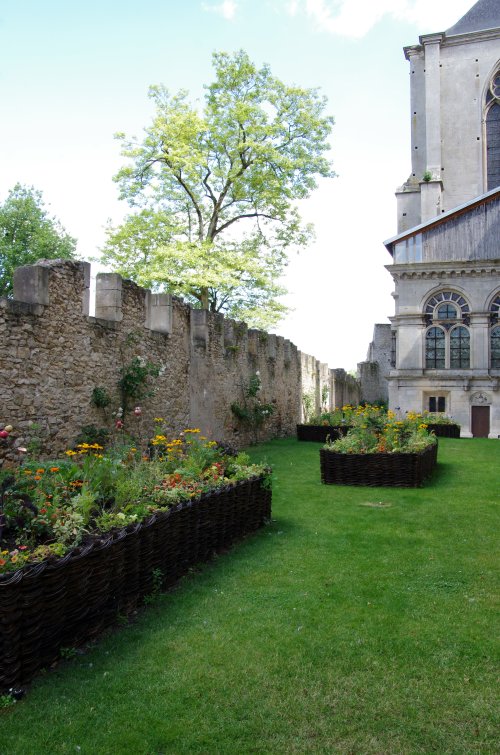
Created in 2011 at the end of restoration work on the north side of the Cathedral this garden is on two levels and offers beautiful views of the august monument.
The first level garden allows the visitors to wander through ‘plessis’ (fences made of interwoven branches) whose planting is inspired by the medieval tradition. At the end of the garden is the Bishops Chapel which is waiting to be restored and which was created at the request of Bishop Hector d’Ailly in 1539 in the purest style of the Renaissance.
The second level garden below is embellished with a collection of Camellias with 20 varieties on show which are chosen for their ability to adapt to the soil and climate of Toul.
The name Camellia was named after the Jesuit missionary Georges Joseph Kaamel (who was better known as ‘Camellus’) by the Swedish naturalist Car Von Linné in 1753.
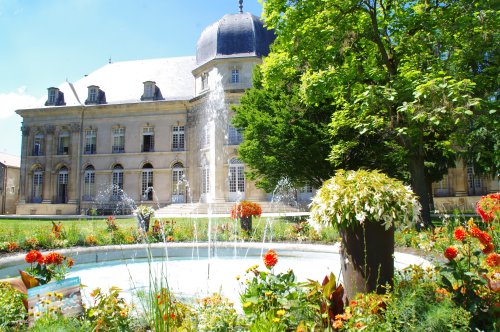
The current town hall is the former Episcopal palace whose construction was started by his Grace Scipion Jérôme Bégon in 1739. The work is based on Nicolas Pierson’s plans.
The *begonias (see below) around the main pond are a reminder of the bond between Toul and the many species of these flowers.
The park also has a rich heritage and includes a Ginkgo biloba which is known as the ‘remarkable tree of France’. The Ginkgo biloba of Toul was reportedly brought from Toulon by Admiral Henri de Rigny (born in Toul in 1782 - winner of the Battle of Navarin in 1827 and Minister of Marine and Foreign Affairs under Louis Philippe).
*Michel Begon was a Governor in the West Indies (under King Louis XIV) and it was he who sponsored the botanist Charles Plumier who went onto to discover the small herbaceous plants. The latter once back in France named the new plant ‘Begonia’ in tribute to his benefactor. This is the first botanical dedication in honour of a person and which then became a tradition.
Michel Begon’s second son became the Bishop of Toul in 1723
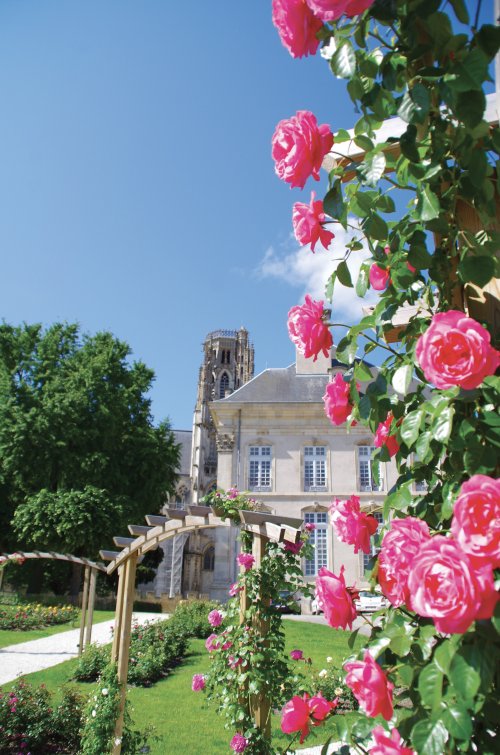
A haven of peace next to the Town Hall park the André Legrand rose garden is a garden which inspires tranquility and serenity. Opened in 2016 it has been entirely created by the local municipal authority and it carries the name of the former Head of Green Spaces Department of the City of Toul. In this garden there are 66 varieties of rose bushes including the rose of Toul.
The Toul rose is a rose bush with double flowers which look like peonies and are very fragrant. The many petals of warm colours do not like the sun but in spite of their number the flowers open well and can tolerate the rain.
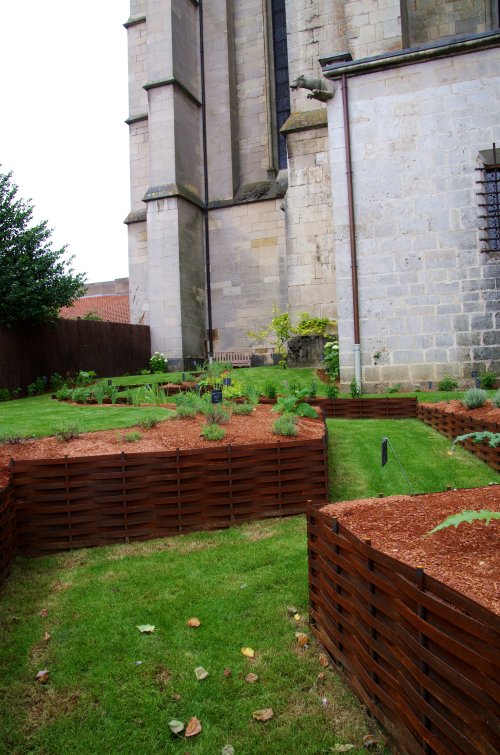
The apse of Saint-Etienne Cathedral, which has long been hidden from view, today offers visitors views of the beautiful foothills in a green setting.
Created in 2017/2018 the Garden of the Foothills mixes the evocation of the Middle Ages with a touch of modernity where plants inspired by the gardens of the common people are in harmony with metal plessis (interwoven fences) and grassed ramps.
As Toul is located on the Camino de Santiago pilgrimage route the Foothills Garden features plants commonly found by pilgrims such as Betula pendula (common birch) and Salvia sclarea (clary sage).
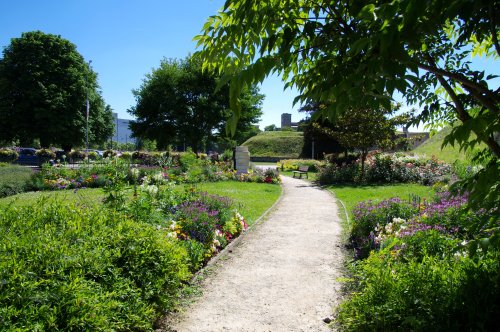
The door of Nancy became Moselle’s door and this city entrance was rebuilt in 1882-1883 in the medieval style.
With the loss of the defensive function of the ramparts in the 19th century the battlements and machicolations now only have a decorative role.
The landscaping of this garden which was designed in 2005 makes it a convivial space and emphasises a remarkable entrance to the city.
The art work ‘Between the lines’ by the sculptor Gé Pellini is on loan from the city council of Meurthe and Moselle and highlights the tribute from the city to the well known writer Emile Moselly.
The Moselly Garden is named in honour of the writer Emile Moselly (real name Emile Chenin 1870-1918) who is buried in a nearby village called Chaudeney-sur-Moselle where he often lived. The author was deeply rooted in rural Lorraine and was awarded the Goncourt Prize for literature in 1907 for ‘Jean des brebis ou le livre de la misère’ and ‘Terres Lorraines’.
The local Studies Circle of Toul awards a prize every year for the best novel about the Lorraine region.
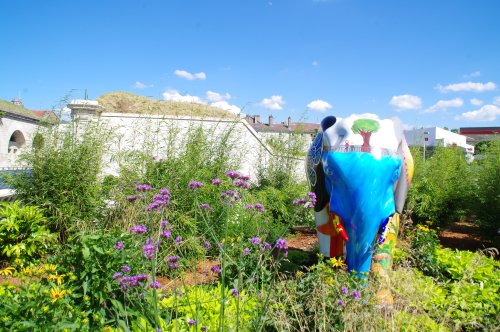
After the loss of the war in 1870 war it was decided to strengthen the eastern border by surrounding the main strongholds with a belt of forts.
This is the case in Toul with the enclosure losing its offensive role to become a defensive place. The Gate of France was rebuilt in 1882-83 and was wider than it was before.
Today the Gate of France welcomes visitors through the garden of Hamm which has luxuriant vegetation composed of bamboos and other perennials which are supplemented with spring and summer flowers and are like the plantations elsewhere in the city.
To celebrate the 30th anniversary of the twinning between Toul and Hamm-Mitte (Germany) the elephant symbol of Hamm was offered to the City of Toul. The pachyderm which was decorated by high school student’s has the coats of arms of the two cities displayed on its flanks as well as the vineyards of Toul and the glass and steel elephant of Maximilian Park in Hamm.
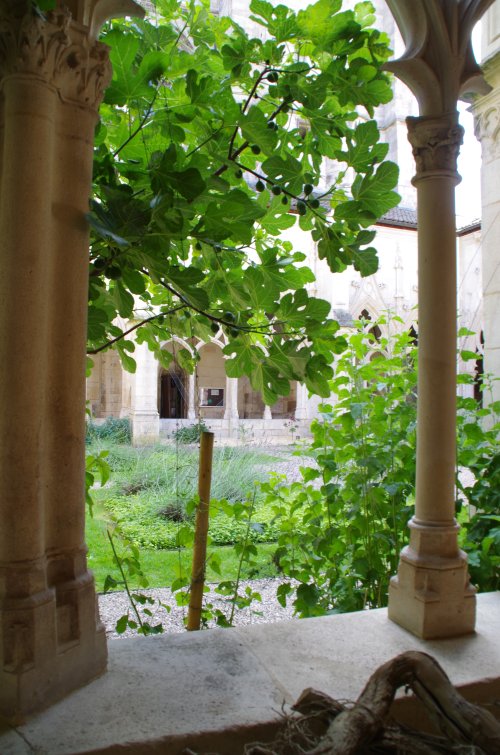
Created between 1510 and 1522 the cloister marks through its decoration the introduction of the Renaissance in the local architecture.
The overall structure remains gothic with the use of liernes and tiercerons at each gallery animated by a series of vault keys which are typical of flamboyant Gothic.
The galleries open onto the garden through three windows decorated on the outside by a broken gable richly decorated with cherubs and imps. The columns are simple or twisted and embellished with Corinthian capitals with florets acanthus leaves bay leaves or crosses.
The most marked by the Italian Renaissance are provided with masks, horns of plenty, foliage and antique basins.
The garden contains plants used in the region in the early 16th century including medicinal plants such as (1) Achillea ptarmica (silver button) which is used to treat urinary problems and toothache (2) Paeonia officinalis (peony) which is known to relieve intestinal pain and headaches or (3) Lavandula angustifolia (true lavender) which is a particularly effective antiseptic.
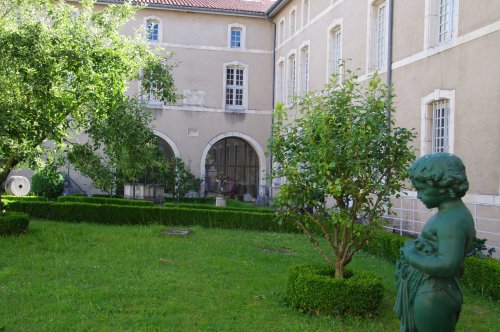
Housed in a former Church the Museum of Art & History offers rich permanent collections as well as eclectic temporary exhibitions
Consisting of a central body with a facade on Gouvion Saint-Cyr street and with two wings surrounding a garden this architectural ensemble from the 18th century stands on three levels. Within these buildings is an old hospital dating from the first half of the 13th century.
Since 2010 the garden has been home to a sample of plants (19 varieties) that are pleasant on the palate or known for their fragrance.
The Museum’s garden consists of a collection of aromatic plants used for cooking and decoration which will appeal to your sense of smell along the fence wall.
In the garden you can find Artemisia absinthium (better known as absinthe) and the Viola odorata (sweet violet) which is recognisable by its fragrance. These are two plants with both taste and medicinal qualities.